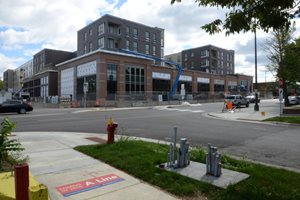 Cities regulate land use and development. This means creating, modifying, and administering zoning codes, subdivision codes, and/or form based codes. A community may update its codes to ensure that future development and infrastructure will be consistent with policy and plans for TOD. Typically, this might include updating provisions in an ordinance that affect features like building use, scale, orientation, and design, and the amount of landscaping or parking. Changes in land use regulations to support TOD are often coordinated with planning for public rights-of-way and green space. This is done so that the relationship of buildings to future design of streets, sidewalks, and open space are clearly understood. The Planning Fundamentals section has further information on content for and approaches to regulating development near transit.
Cities regulate land use and development. This means creating, modifying, and administering zoning codes, subdivision codes, and/or form based codes. A community may update its codes to ensure that future development and infrastructure will be consistent with policy and plans for TOD. Typically, this might include updating provisions in an ordinance that affect features like building use, scale, orientation, and design, and the amount of landscaping or parking. Changes in land use regulations to support TOD are often coordinated with planning for public rights-of-way and green space. This is done so that the relationship of buildings to future design of streets, sidewalks, and open space are clearly understood. The Planning Fundamentals section has further information on content for and approaches to regulating development near transit.
When preparing a station area plan, as with the comprehensive plan, cities consider how to schedule and approach potential regulatory changes in sync with the timing and sequencing of land use and infrastructure changes. For policymakers, staff, and developers, it is important to clarify how and when regulatory changes will occur as part of an implementation strategy. Doing so can avoid conflicts between a city’s comprehensive plan and the city’s official controls, where state law requires the city to eliminate the conflict by amending the official controls.